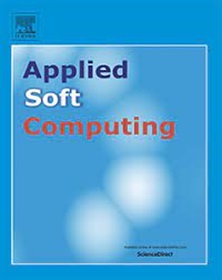基于尺度重要性估计的分层多图网络图像分类
IF 6.6
1区 计算机科学
Q1 COMPUTER SCIENCE, ARTIFICIAL INTELLIGENCE
引用次数: 0
摘要
这项工作介绍了一种新的图像表示和处理方法,使用图神经网络(gnn)。我们提出了一种多图表示,称为分层多图(HELM),它明确地将空间和层次关系编码为不同的边缘类型,克服了现有方法无法充分利用图像中关系信息的局限性。通过对超像素基图进行分层分割,生成多尺度表示,从而可以计算尺度内和尺度间的空间和层次关系。为了有效地处理这种多关系信息,我们引入了分层多图网络(HELMNet),这是一种新的GNN架构,它包含了选择性地聚合和融合来自每种不同边缘类型的信息的专门机制。此外,它还包括一个区域图读出(RGR)模块,该模块采用注意机制,在聚合过程中动态加权每个表示尺度的贡献,以进行分类。实验结果表明,HELMNet在图像分类方面具有较好的效果。与不区分边缘类型的分层模型相比,HELMNet在CIFAR-10和STL-10数据集上分别获得了2.1%(在3%水平上显著)和10%(在0.1%水平上显著)的平均精度增益。在EUROSAT数据集上,HELMNet达到了95%以上的准确率,只需要0.73%的最佳性能的最先进的模型大小(参数数量)。对于要求更高、分辨率更高的RESISC45数据集,所提出的模型仍然提供了令人印象深刻的结果,实现了85%以上的准确率。本文章由计算机程序翻译,如有差异,请以英文原文为准。
Hierarchical layered multigraph network with scale importance estimation for image classification
This work introduces a novel image representation and processing approach using Graph Neural Networks (GNNs). We propose a multigraph representation named HiErarchical Layered Multigraph (HELM), which explicitly encodes spatial and hierarchical relationships as distinct edge types, overcoming the limitations of existing methods that fail to fully exploit relational information in images. A multi-scale representation is generated through hierarchical segmentation of a superpixel base graph, enabling the computation of spatial and hierarchical relationships within and across scales. To effectively process this multi-relational information, we introduce the HiErarchical Layered Multigraph Network (HELMNet), a novel GNN architecture incorporating specialized mechanisms for selectively aggregating and fusing information from each distinct edge type. Additionally, it includes a Region Graph Readout (RGR) module that employs an attention mechanism to dynamically weight the contribution of each representation scale during the aggregation process for classification. Experimental results demonstrate the greater efficacy of HELMNet for image classification. Compared to hierarchical models that do not distinguish between edge types, HELMNet obtains substantial average accuracy gains of 2.1% (significant at 3% level) and 10% (significant at 0.1% level) on the CIFAR-10 and STL-10 datasets, respectively. On the EUROSAT dataset, HELMNet achieves over 95% accuracy, requiring only 0.73% of the best-performing state-of-the-art model size (in number of parameters). For the more demanding and high-resolution RESISC45 dataset, the proposed model still delivers impressive results, achieving an accuracy of over 85%.
求助全文
通过发布文献求助,成功后即可免费获取论文全文。
去求助
来源期刊

Applied Soft Computing
工程技术-计算机:跨学科应用
CiteScore
15.80
自引率
6.90%
发文量
874
审稿时长
10.9 months
期刊介绍:
Applied Soft Computing is an international journal promoting an integrated view of soft computing to solve real life problems.The focus is to publish the highest quality research in application and convergence of the areas of Fuzzy Logic, Neural Networks, Evolutionary Computing, Rough Sets and other similar techniques to address real world complexities.
Applied Soft Computing is a rolling publication: articles are published as soon as the editor-in-chief has accepted them. Therefore, the web site will continuously be updated with new articles and the publication time will be short.
 求助内容:
求助内容: 应助结果提醒方式:
应助结果提醒方式:


